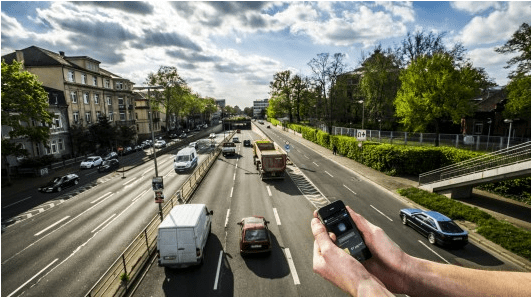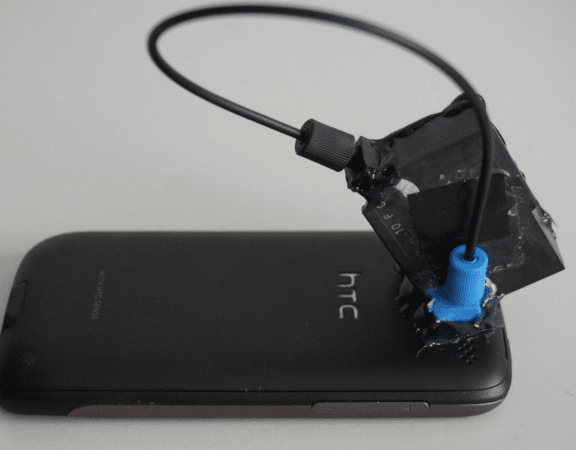KIT Scientists Develop Smartphone Sensor To Generate Pollution Maps
Scientists of Karlsruhe Institute of Technology (KIT) are developing a sensor which can be easily connected to the smartphones that will measure the levels of pollutants suspended in the air. As most of the cities have high level of particulate matter, this new novel device can be helpful in detecting the level of pollutants emitted by vehicles in the area nearby. The objective of developing this sensor is to track the pollution level in different parts of the city in real time and to form comprehensive data that will draw a pollution map.

Now, let’s see how smartphones can be used for this purpose. The flash light of the smartphone is emitted into the measurement area. The light emitted is scattered by smoke or dust particles present in the surrounding. The camera now acts as a receptor and takes the snap to represent the result of the measurement area. The brightness of the pixels helps to determine the concentration of smoke or dust. According to computer scientist Matthias Budde, the current smartphone sensors are adaptive in the task of reading particulate matter concentration in air and can measure concentrations in terms of microgram per cubic meter. However, these sensors fail to detect fine smoke and dust particles in the microgram range.

Presently, the size of the new sensor is large but future versions will be small and will be attached to the smartphone by means of a magnet. Number of users required to make the real time, reliable pollution maps is not determined yet. In order to contribute to the participatory sensing, the users will have to download the required app and attach the sensor to the smartphone. The image or video at the desired location is taken. The images taken can be analyzed locally or can be transferred to a system that collects and combines data with other measurements. The system then forwards it to the phones which will now show the concentration of fine dust or smoke in the air. The KIT scientists are planning to increase the sensitivity of the sensor by using hemispherical lenses.
The main purpose of crowdsource sensing is to increase the number of measurements which will indeed enhance the accuracy and quality of the data.
Source: <a href="https://www.kit.edu/kit/english/pi_2014_15176.php" target="_blank" rel="nofollow noopener noreferrer">KIT - KIT - Media - Press Releases - Archive Press Releases - Measuring Fine Dust Concentration via Smartphone</a>
Image credit: #-Link-Snipped-#
Now, let’s see how smartphones can be used for this purpose. The flash light of the smartphone is emitted into the measurement area. The light emitted is scattered by smoke or dust particles present in the surrounding. The camera now acts as a receptor and takes the snap to represent the result of the measurement area. The brightness of the pixels helps to determine the concentration of smoke or dust. According to computer scientist Matthias Budde, the current smartphone sensors are adaptive in the task of reading particulate matter concentration in air and can measure concentrations in terms of microgram per cubic meter. However, these sensors fail to detect fine smoke and dust particles in the microgram range.
Presently, the size of the new sensor is large but future versions will be small and will be attached to the smartphone by means of a magnet. Number of users required to make the real time, reliable pollution maps is not determined yet. In order to contribute to the participatory sensing, the users will have to download the required app and attach the sensor to the smartphone. The image or video at the desired location is taken. The images taken can be analyzed locally or can be transferred to a system that collects and combines data with other measurements. The system then forwards it to the phones which will now show the concentration of fine dust or smoke in the air. The KIT scientists are planning to increase the sensitivity of the sensor by using hemispherical lenses.
The main purpose of crowdsource sensing is to increase the number of measurements which will indeed enhance the accuracy and quality of the data.
Source: <a href="https://www.kit.edu/kit/english/pi_2014_15176.php" target="_blank" rel="nofollow noopener noreferrer">KIT - KIT - Media - Press Releases - Archive Press Releases - Measuring Fine Dust Concentration via Smartphone</a>
Image credit: #-Link-Snipped-#
0
